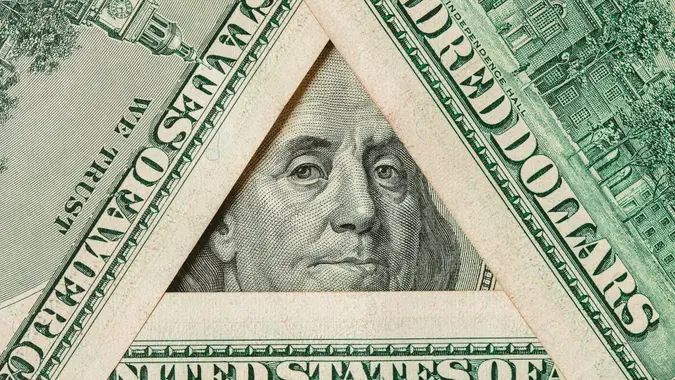Why You Should Refinance High-Interest Debt Before the End of 2024

Commitment to Our Readers
GOBankingRates' editorial team is committed to bringing you unbiased reviews and information. We use data-driven methodologies to evaluate financial products and services - our reviews and ratings are not influenced by advertisers. You can read more about our editorial guidelines and our products and services review methodology.

20 Years
Helping You Live Richer

Reviewed
by Experts

Trusted by
Millions of Readers
The Federal Reserve was expected to announce a long-awaited interest-rate cut this week, with some economists looking for a cut of 50 basis points — the biggest in years. The announcement was due during the Federal Open Market Committee on Wednesday, September 18.
Once the expected rate cuts go into effect, experts recommend that consumers refinance their high-interest debt to make it more manageable.
Experts Want a Half-Point Rate Cut
The hope in many circles is that the Fed would make a half-point cut to help boost the economy. But there was still a possibility that the cut would be only a quarter-point.
“My hope is [a half-point] because I think rates are just too high,” Mark Zandi, chief economist at Moody’s Analytics, told CNBC. “They have achieved their mandate for full employment and inflation back at target… so I think they need to normalize rates quickly and have a lot of room to do so.”
Michele Raneri, vice president and head of U.S. research and consulting at TransUnion, also looked for a cut as high as a half-point. In a note shared with GOBankingRates, Raneri suggested that the Fed could make additional reductions later in the year — which provides even more incentive to refinance before the end of 2024.
Current Rates Still High
The current effective federal funds rate sits between 5.25% and 5.5%, according to the Economic Policy Institute. To put that number in perspective, the rate was between 1.5% and 1.75% in 2019, before the COVID-19 pandemic hit. The Fed’s target rate is about 2.0%.
That doesn’t mean consumers are paying interest at or near the federal funds rate, however — or even close to it. The average U.S. mortgage rate on a 30-year fixed loan was 6.2% as of Sept. 12, according to Freddie Mac. That represents a considerable dip from a year ago but is still well above average rates earlier in the decade.
LendingTree estimates that the average annual percentage rate on new credit cards stood at a whopping 24.92% as of Sept. 10.
Now’s the Time
Despite the high rates, consumers “continue to have a strong demand for credit,” according to Raneri. That’s reflected in the fact that balances “continue to creep up” across most credit products. With rates finally expected to go down, there is no better time to refinance your current debt and lower your monthly payments.
“This forthcoming reduction in interest rates could ultimately allow for consumers to see lower monthly payments,” Raneri noted. “It also may allow for many consumers to consider refinancing higher interest debt into a lower interest credit product such as a personal loan or home equity loan.”
More From GOBankingRates
 Written by
Written by  Edited by
Edited by 

























